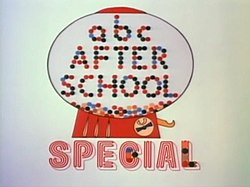
“’Containment’ was not only a defensive,
military strategy developed as U.S. foreign policy in the 1950s; it was
practiced on the domestic front as well […] keeping them [women] in the home”
(Mellencamp 81).
The idea of the
home as a utopic space for repose and tranquility is one of the major hoaxes in
human history deployed by traditionalist to contain women in the domestic
sphere. One could potentially read this as a practice of behavior modification
depending on the context and angle. Migratory experiences from the urban to
suburban facilitated a return to the preservation of Victorian familial values
in a post-war period of mass consumption. Television is complicit in this
process of containment by operating as an apparatus diffusing an ideology
around domesticity, and thus informing how women are expected to excel in their
menial duties. Tania Modleski’s essay touches upon several important points
concerning the emotional, physical, and performative labor stay-at-home female
figure invested in order to embrace a maternal role, where she writes “Not only
is it the responsibility of the woman in the home to be sensitive to the
feelings of her family, her job is further complicated by the fact that she
must often deal with several people…” (70). One should keep in mind that
Modleski’s article strictly studies women in relation to work and television’s
presence in the home. What happens when televisual texts approach domesticity for
the entire family (excluding the father)?
For this analysis,
I bring an episode from the ABC
Afterschool Special series aired in 1984, “Mom’s on Strike.” Before
exploring this episode further, I would like to briefly refer to George Lipsitz
essay with an investigative angle on his thought and dialogue section. Lipsitz
draws on an imperative point relating to the formation of ideology circulating
through conservative social circles and how media (or television) plays a major
role in the injection of such an imagined thought. In order to assist in the
maintenance of a thriving capitalist society (read: bourgeois, suburban, white)
“cultural values and beliefs from the past, like religion or the patriarchal
family” will be borrowed to justify “moral grounding for contemporary forces
inimical to the interest of tradition” (98). If television participates in this
machination, how are young people’s programming responding to notions of
domesticity in neo-conserve 1980s?
The ABC Afterschool Special had a particular
audience in mind: youth and their families.
The particular episode (as explained above)
addresses a previously ignored social issue around domesticity and the role of women
in the home. Much of the scholarship around televisual viewing practices of the
1950s culture centers mostly on women and familial practices, but little is
written about programming content that challenge domesticity. At around this
time (1980s) emerging discourses on television and its content become vehicles
to discuss family viewing practices. In this episode, of the ABC Afterschool Special, through the
perspective of the eldest teenage girl, a feminist theme is made ostensible.
After a friend of the protagonist lauds her mother’s effort, the teenage girl rebuttals
by saying “my mother is not a radical feminist, she’s just a happy housewife.” As the narrative progresses, we become aware
that the mother is displeased with her sense of devalued worth both in society
and in the home. In a series of complex outcomes, other women join the growing
movement and men counter-protest their efforts.
At
the conclusion of the special, everyone negotiates their differences and return
to the cyclical repetitive nature of social discourse containment. Returning to
our discussion of the family, it is interesting to find a children/youth
program addressing domestic issues. Interestingly, the show appeared at a
specific time slot to reach a larger audience. A few questions I am attempting
to properly establish and answer are: 1) How did social issues discourses in
children’s programming provide reflection of one’s own family dynamics, 2) What
was the reception of such texts in feminine spheres and how did it differ in
male circles? 3) In what ways did the series help families and young viewers
negotiate/navigate domestic roles?
Link to the episode: https://www.youtube.com/watch?v=THVSMR8mT2g
(Excuse the quality of the audio).
Works Cited
Lipsitz, George.
“The Meaning of Memory: Family, Class, and Ethnicity in Early Network
Television Programs.” Private Screenings:
Television and the Female Consumer. Eds. Lyn Spiegel and Denise Mann.
University of Minnesota Press. Print.
Mellencamp,
Patricia. “Situation Comedy, Feminism, and Freud: Discourses of Gracie and
Lucy.” Studies in Entertainment: Critical
Approaches to Mass Culture. Ed. Tania Modeleski. Indianapolis: Indiana
University Press, 1986. Print.
Modleski, Tania.
“The Rhythms of Reception: Daytime Television and Women’s Work.”
No comments:
Post a Comment